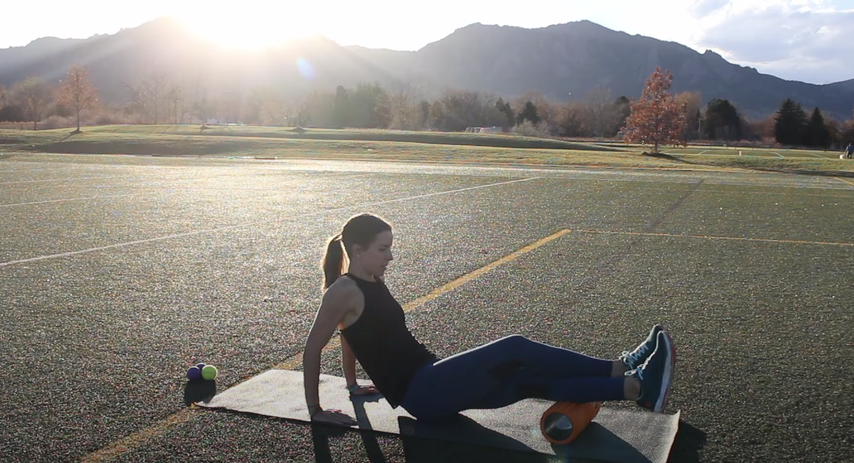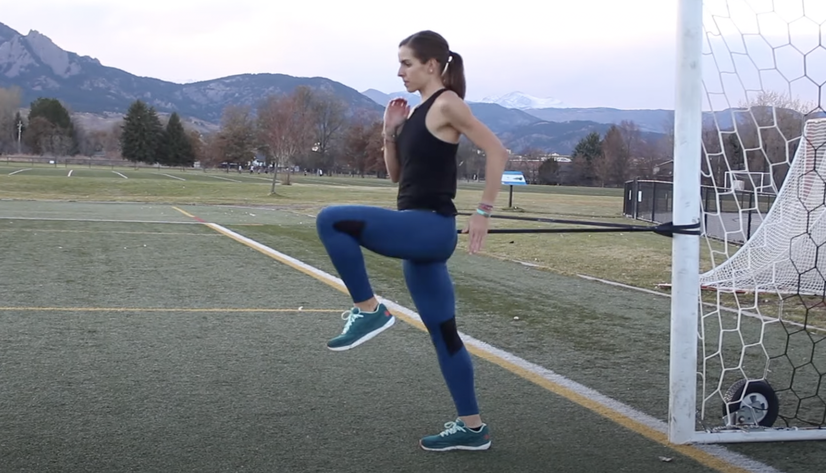| Engaging your muscles fully and preventing constant tightness is essential to maximize your performance and reduce the risk of injury. Coach Sandi Nypaver will be sharing her expertise on the three key ingredients to an effective warm-up routine that will not only prepare your body for exercise but also improve your overall mobility and flexibility. So, whether you’re a seasoned athlete or just starting out, keep reading to learn how you can take your warm-up routine to the next level! Step #1: Active Release and Foam Rolling |
 |
| The first step to a proper warmup routine is foam rolling or doing some type of active release. This is often something athletes think they should do post-run, or just remember they can fit it in, but the benefits may be short-lived when done alone. Current research has shown people can get lasting benefits if they foam roll right before mobility exercise. Think of it this way: if there’s a knot in a rope, you can pull the rope all you want, but it’s not going to reach its full length until the knot is removed. Foam rolling and active release aids in getting rid of the tight muscles and promotes good fascial movement so that you can get a better range of motion during your mobility exercises. To be realistic, if you’re short on time and nothing feels tight, then I do believe it’s sometimes okay to jump right into mobility. However, I strongly believe in the benefits of consistent foam rolling and active release sessions to keep runners mobile and healthy. Many runners have no idea how tight certain muscles are until issues arise. Step #2: Mobility |
 |
| Let’s move on to the second key ingredient, mobility. Mobility is the joint’s ability to move through a range of motion. In other words, doing mobility before a strength session or a run reminds your body to move through its full range of motion instead of staying in a shortened state. Think of it this way, if you just sat at a desk all day, your hip flexors are used to being in a shortened state and your glutes are used to being turned off. Doing hip mobility would remind your hip flexors on how to lengthen while waking up your glutes. The same goes for sitting in a hunched position for long hours. Doing a little thoracic mobility can open up your chest and allow for a proper counter rotation to your lower body as you run. When runners lose thoracic mobility, they may try to get the counter rotation from their low backs instead. Proper mobility as you run can help you better absorb impact forces while simultaneously allowing you to create more force or allowing you to get more power from your muscles. Step #3: Activation |
 |
| Now let’s tie an active release and mobility with a third key ingredient: activation. Since you took a couple of minutes of foam roll and did some mobility exercises, you can now get the full benefits of your activation exercises because you can fully access the muscles you’re targeting. In turn, this can help prevent chronic tightness. For example, if your hip flexors are chronically tight, when your glutes are engaged, your hip flexors will lengthen as you move. So, your hip flexors are no longer in a chronically shortened state which caused the chronic tight. The crucial factor with any activation exercise is to make sure you are using the muscles you’re supposed to be using. That mind body connection is essential, especially as you start your run or strength workout. It is entirely possible to look like you’re doing a glute bridge, but not feel your glutes working at all. That’s not what you want. If you can’t feel the right muscles working, you may need to do a little more active release and then start off with simpler exercises in smaller movements. Different people need to work on different things. But with my experiences as a running coach, my practical advice would be to spend the first couple minutes of your warmup routine, aiming to create good fascial movement and relax the tight muscles. Next, do a hip thoracic spine and ankle mobility exercise. Lastly, pick a couple of activation exercises to target your different gluteal and hip muscles. Yes, there are exercises that double as both mobility and activation exercises, like a lunge with a side rotation.In conclusion, a proper warmup routine that includes foam rolling or active release, mobility exercises, and targeted muscle activation is critical for preventing injury and optimizing performance. By investing just a few minutes in a comprehensive warmup, you can effectively prepare your body for the physical demands of your workout or competition. So, take the time to engage your muscles fully, relax any tight areas, and prime your body for success. Incorporating these three key warmup ingredients into your routine can help you become a stronger and faster athlete. |
